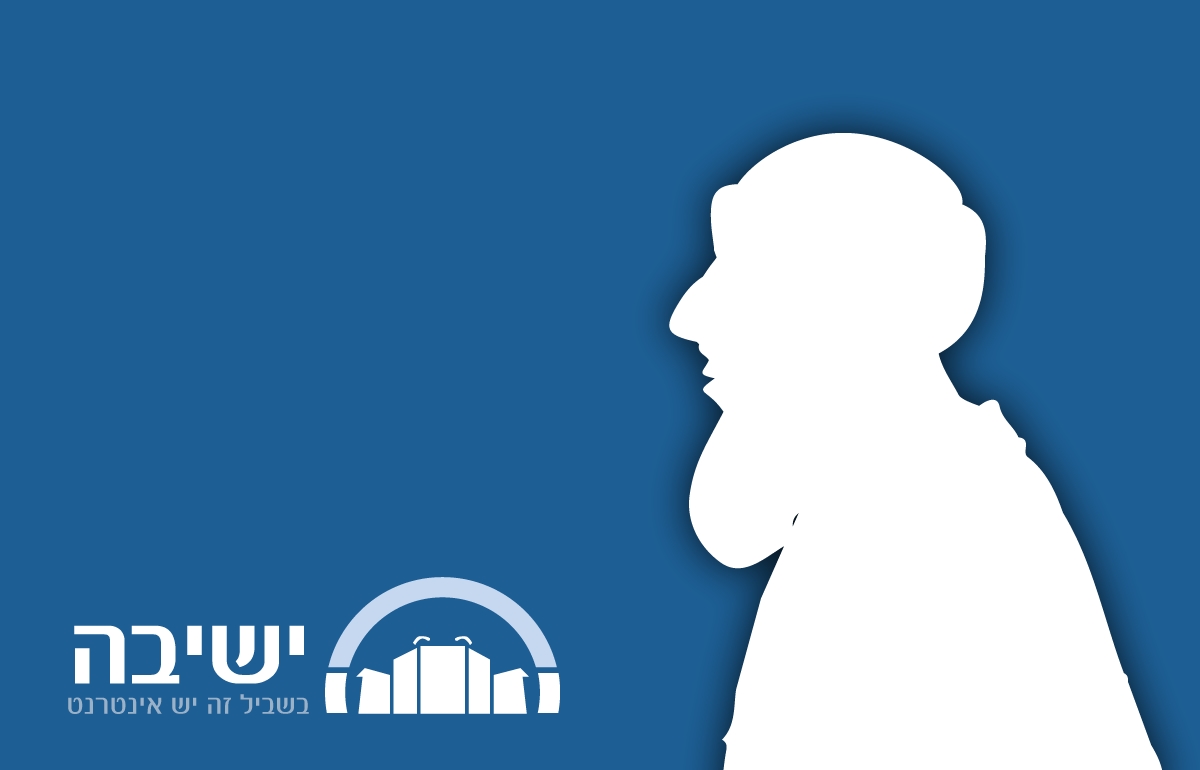- Library-Sifria
- Prayer
1116
10.The Order of the Berachot
Shemoneh Esrei is divided into three parts: praises, requests, and thanksgiving. In reciting the first three berachot, we resemble slaves who offer words of praise before their master. While reciting the middle blessings we are similar to slaves who make requests of their master. When we recite the last three blessings, we are like slaves who gracefully accept reward from their master, then are dismissed and go on their way (Berachot 34a).
We learned this from the prayer of Moshe Rabbeinu, who opened with praise and from there continued to plead and request (Berachot 32a; also see the laws of Pesukei d’Zimrah in this book 14:1). Without the introduction of praise, there is concern that our prayer will resemble the rituals of idol worshipers, whose entire aim is to mystically manipulate the higher powers to work for their benefit. In contrast to them, we want to serve Hashem and devote ourselves to Him, and all we ask is that He bestows abundant goodness and blessing upon us so that we can reveal His Name in the world. Therefore, first, it is incumbent upon us to know before Whom we are standing in prayer. We stand before God, the great, the mighty, and the awesome, the One Who sustains life and resurrects the dead, HaKadosh Baruch Hu. With that understanding, we can approach Him and pray with a pure heart for all of Israel and for ourselves.
Indeed, in the section of the requests, in which there are thirteen berachot, the general ambitions of the nation of Israel are expressed. They are not intended for the individual advancement of the person praying; rather the essence of the requests is about revealing Hashem’s glory in the world. Even our personal requests for health and livelihood are to allow us to participate in the rectification of the world (tikun olam). The following are the thirteen themes for which we ask: wisdom, repentance, forgiveness, redemption, health, livelihood, the ingathering of the Jews from the exiles (kibbutz galuyot), the return of justice, the destruction of those who hate us, the blessing for the righteous, the rebuilding of Jerusalem, the re-establishment of the kingship of the house of David, and finally, that our prayers be heard.
After the requests, we end the Amidah with three general berachot, in the center of which is a thanksgiving blessing concerning our lives and all the goodness that Hashem constantly bestows upon us. Before this, we pray for the return of the Temple services, and after it, we recite a berachah for shalom, since shalom is the vessel that encapsulates and sustains all the berachot.
Here is the place to note that the Shemoneh Esrei (which means eighteen) is actually comprised of nineteen berachot. At first, when Anshei Knesset HaGedolah instituted the Amidah, it was made up of eighteen berachot. After the number of slanderers and informers increased, following the rise of Christianity, which preached the hatred of the Jews, the Chachamim instituted an additional berachah for the saving of the nation from the hands of the apostates and slanderers. 7
11.Personal Requests in the Amidah
Anshei Knesset HaGedolah, in their wisdom and Divine inspiration (ruach hakodesh), included all the ideal aspirations of Am Yisrael in the wording of the prayer. They meticulously chose every word until a perfect wording was established, with which the Jewish soul can express itself before its Creator in the most supreme manner possible.
Even so, if a person wishes to add requests of his own in the middle berachot, he is permitted to do so. However, in the first three berachot, which are intended to praise Hashem, and in the last three, which are intended for thanksgiving, it is prohibited to add personal requests, so as not to detract from their general purpose (Shulchan Aruch 112:1; 119:1).
The personal requests permitted in the middle berachot must be related to the theme of the berachah. For example, if a person in one’s household is ill, one should pray for him or her in Birkat Refa’einu. If a person is in need of a livelihood, he should request that in Birkat HaShanim. If he wants his relatives to make aliyah, he should pray for that in Birkat Mekabetz Nidchei Amo Yisrael. However, out of all the berachot, Birkat Shome’a Tefillah is special. In it, one may make all types of requests. Since it concludes the blessings of request, it includes all of them. When one adds his own personal petitions, he begins reciting the established wording, and just before the concluding sentence, inserts his request.
Not only is it permissible to make personal requests, but according to many, it is desirable to do so, since the personal prayers that one adds emerge from the depths of his heart and arouse kavanah. Nevertheless, it is advisable not to prolong one’s personal appeals in the Amidah, not even in the berachah of Shome’a Tefillah, because the essence of prayer is directed towards the needs of the community as a whole, and when numerous personal requests are added, the communal character of the prayer is altered. It is best that one who desires to add more personal prayers does so after he finishes reciting all the berachot and says "Yih’yu l’ratzon…" since everything recited after that is not considered to be the main part of the Amidah. Rather, it is a relevant supplement to the prayer, for as long as he has not yet taken three steps backwards, he still stands before the Holy One Blessed Be He (Shulchan Aruch, Orach Chaim 119:2; Mishnah Berurah 119:12).
A person must express his requests in the Amidah properly. Therefore, when praying for an ill person, it is correct to mention his or her name. L’chatchilah, it is good to mention the name along with the mother’s or father’s name. However, if the sick person is next to him, it is unnecessary to mention his name, for his intention is clear. (Mishnah Berurah 119:2).
12.The Conclusion of the Amidah
In reciting the verse, "Yih’yu l’ratzon…," ("May the expressions of my mouth and the thoughts of my heart find favor before You, Hashem, my Rock, and my Redeemer"), which is said after the blessing for shalom, we end the main part of the Amidah. Therefore, if one hears Kaddish or Kedushah while he is between the berachah and that verse, he may not answer, because that verse is part of the Amidah (Shulchan Aruch and Rama 122:1).
However, from the beginning of Elokai netzor until the second time Yih’yu l’ratzon is recited, one is permitted to respond to Kaddish, Kedushah, Barchu, and Modim – like the law regarding one who is in the middle of Birkot Keriat Shema – because the person praying has already concluded the main part of the Amidah. Nevertheless, since he did not entirely finish the prayer, he is prohibited from answering Amen after berachot or anything similar (Shulchan Aruch there; and see Hilchot Birkot Keriat Shema 16:5).
As we have learned, it is in this section that one may extend his supplication and requests as much as he desires, like it is said about Rabbi Akiva, that when he would pray individually he would prolong his prayer with supplications following the Amidah (see Berachot 31a). 8
Upon the conclusion of the prayers of supplication, the person praying recites Yih’yu l’ratzon again and takes three steps backwards. If he cannot step backwards because the person behind him is still praying, even though he has not yet departed from the Amidah, he may respond aloud to any matter of sanctity, even "Baruch Hu u’varuch Shemo," since he already finished the supplications after the Amidah. Similarly, he is permitted to continue praying, reciting Ashrei and Aleinu L’Shabe’ach, or he may recite Psalms or learn Torah (see further in this chapter, halachah 20).
^ 7.The Amidah continued to be called "Shemoneh Esrei", since this was its name originally. My teacher and rabbi, Rav Tzvi Yehudah Kook ztz"l, further explains that the essence of the Amidah is, indeed, the eighteen berachot, for all the berachot have their own virtue of praise and blessing, but only Birkat HaMinim is about the uprooting of evil, which is temporary, since when evil will cease there will be no need for it. Therefore the name of the Amidah remains "Shemoneh Esrei" (brought by Netiv Binah, part 1, p. 261).
^ 8.According to the Gra, Yih’yu l’ratzon is not recited before Elokai netzor, so that all the prayers of supplication will be included in the Amidah, and in his opinion, therefore, we do not respond to Kaddish and Kedushah there. However, according to the Rama, even when it is not customary to recite Yih’yu l’ratzon before Elokai netzor, we do, indeed, respond to Kaddish and Kedushah in the prayers of supplication. When we do say Yih’yu l’ratzon before the prayers of supplication, we do not respond to Kaddish and Kedushah before the verse, although we do answer after it. The Mishnah Berurah 122:3 writes that it is good to say Yih’yu l’ratzon before Elokai netzor and after it, and that is the minhag. Therefore, one may not respond to Kaddish and Kedushah before the first Yih’yu l’ratzon.
Nefillat Apayim and the Prayers of Supplication
Chapter Twenty One-Part One
Rabbi Eliezer Melamed | 5775
The Bedtime Shema
Chapter Twenty Six
Rabbi Eliezer Melamed | 5775
The Ma’ariv Prayer
Chapter Twenty Five-Part One
Rabbi Eliezer Melamed | 5775
Birkat Kohanim – The Priestly Blessing
Chapter Twenty-Part One
Rabbi Eliezer Melamed | 5775

Rabbi Eliezer Melamed
Rosh Yeshiva of Har Bracha and rabbi of the settlement.
Preventing Possible Disruptions in Prayer
Chapter five-part three
5775
18. Torah Verses in the Prayers and in the Berakha of She-asa Li Kol Tzorki
Chapter 10: The Laws of Tisha Be-Av
Cheshvan 27 5782
1. The Enduring Holiday of Hanuka
Chapter 11: Hanuka
Cheshvan 27 5782
Where we should not pray? (part one)
Chapter three-part two

Historical View of Rav Mordechai Yaakov Breish (Chelkat Yaakov)
Various Rabbis | 5775
The Desecration of God and the Torah
Rabbi Eliezer Melamed | 5775
The Desecration of God and the Torah
Rabbi Eliezer Melamed | 5775

Yonah ben Amitai
Rabbi Shaul Yisraeli zt"l | 5774
Daf Yomi Makkot Daf 22
R' Eli Stefansky | 2 Iyar 5785

Tolerance but Not at All Costs
Ayn Aya Shabbat v, 73
Rabbi Ari Shvat | Iyar 5785

Reassuring His Parents – #314 – part I
Date and Place: 23 Sivan 5670 (1910), Yafo
Beit Din Eretz Hemda - Gazit | Iyar 5785





